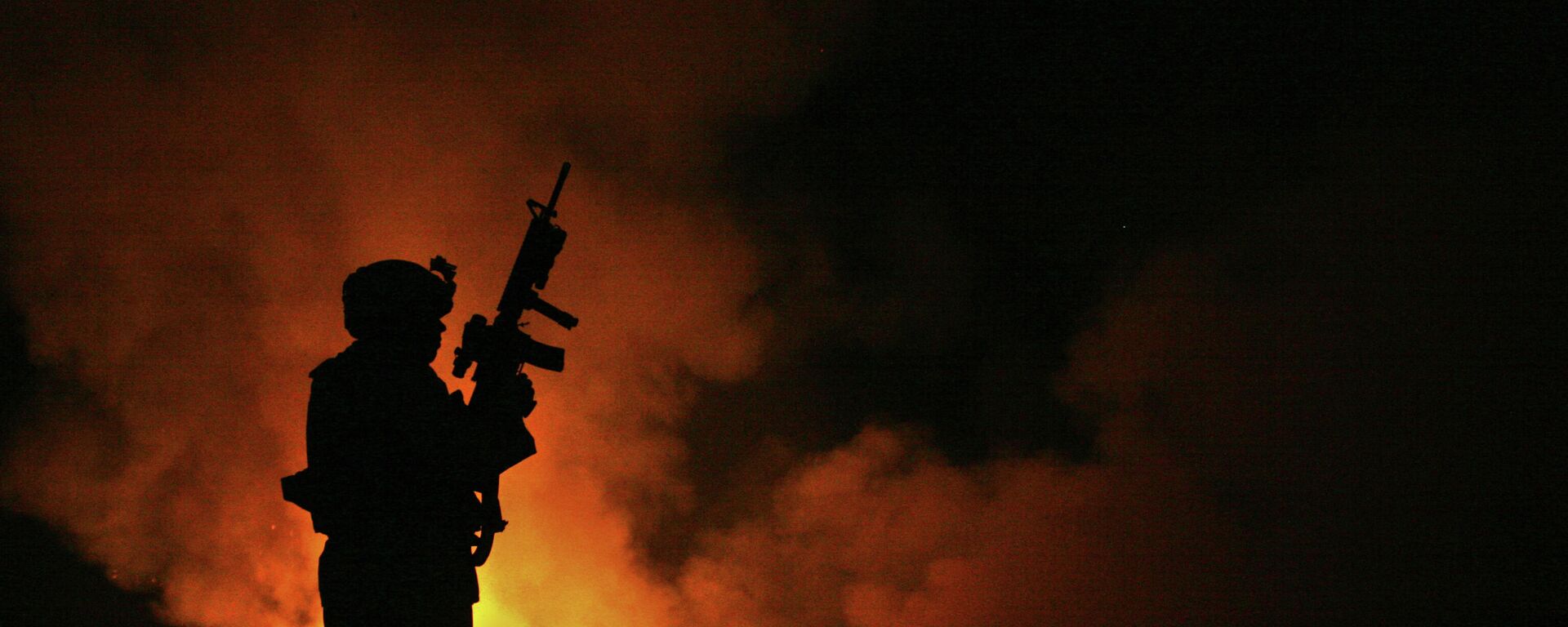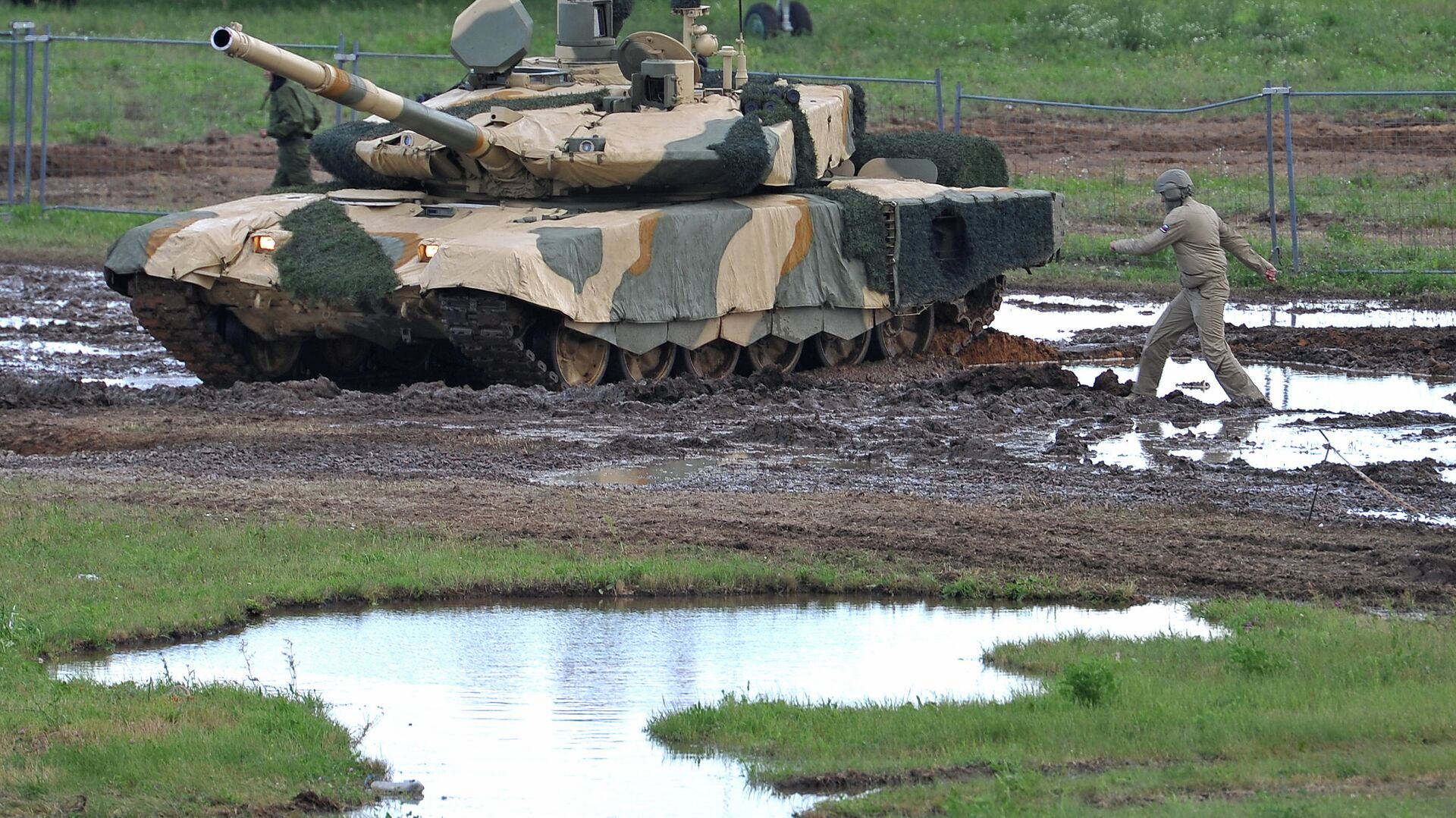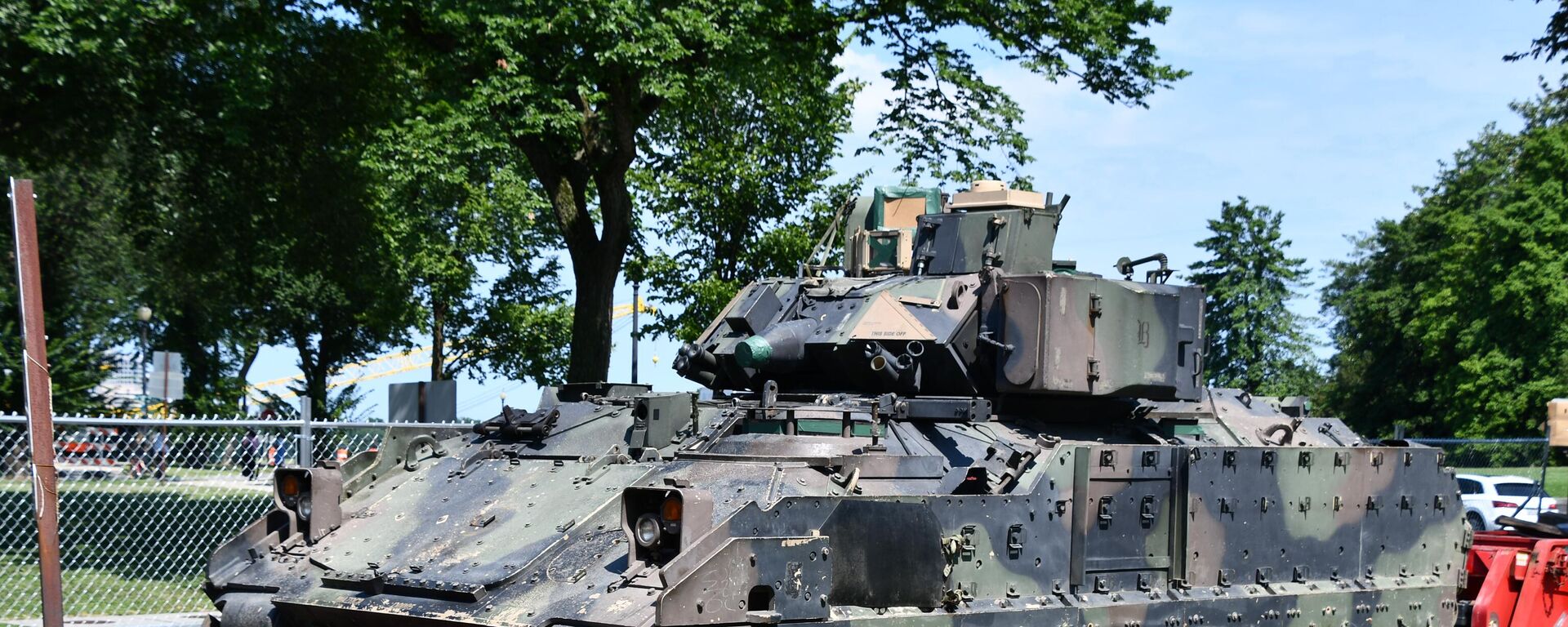https://sputnikglobe.com/20230629/kalashnikovs-camouflage-cloak-for-tanks-what-is-it-and-how-does-it-work-1111554258.html
Kalashnikov’s Camouflage Cloak for Tanks: What is It and How Does It Work?
Kalashnikov’s Camouflage Cloak for Tanks: What is It and How Does It Work?
Sputnik International
The NATO-Russia proxy conflict in Ukraine has proven that the principles of tank warfare developed during the Second World War and perfected during the Cold War remain as relevant as ever, with updates to tactics made largely to account for new technologies, among them radar-absorbent materials.
2023-06-29T16:29+0000
2023-06-29T16:29+0000
2023-06-29T16:54+0000
military
kalashnikov concern
russia
ukraine
protection
tank
armor
radar
https://cdn1.img.sputnikglobe.com/img/101874/73/1018747322_0:142:2703:1662_1920x0_80_0_0_87a069ce41dd28ba1f53dfa09f41f80a.jpg
Russian defense enterprises have begun the mass deployment of the "Nakidka" (lit. "Cloak"), a three-tiered radar absorbent camouflage system that can provide protection to tanks, armored fighting vehicles, fortifications, and other structures from enemy precision weapons.What Fueled Creation of Radar-Absorbent Materials?Recognition of the need for radar-absorbent material-based camouflage first emerged in the aftermath of World War II thanks to the creation and proliferation of guided missile systems. The development of early anti-aircraft homing missile technology in the 1950s, which operated by locking on to heat generated by a plane’s engines, gave rise to the earliest forms of defenses against these weapons: flares and sleek airframes designed to reduce the aircraft’s radar cross section (RCS).In the 1970s and 1980s, engineers experimented with a new generation of radar-absorbing materials made available through advances in chemistry, including carbonyl iron and ferrite coatings, foam absorbers, and carbon nanotubes. Due to their expense, radar-absorbing materials were originally fitted only to aircraft, not ground vehicles.The tide began to turn in the 2000s, with scientists from Russia, the US, and other major powers developing inexpensive radar-absorbing cloaks that could cover vehicles, drones, aircraft, and even warships or buildings.Nakidka’s CharacteristicsAmong them was the Nakidka, a ferrite-based passive protection system first unveiled in the mid-2000s, and designed to protect against electromagnetic emissions in the 0.5-50 GHz range, and to reduce electromagnetic field emissions to between 10-30 dB (for those reflecting from the fabric) and up to 100 dB (those passing through it).The passive protection system, which effectively conceals the tank’s thermal, infrared, and radar signatures, is easy to deploy and use, with custom kits featuring 10 separate components for the turret, engine compartment, frontal and side armor, etc. being made available.The Nakidka protects equipment from detection by a variety of enemy systems, including radar and thermal imaging systems on board satellites, aerial or ground-based radar, anti-tank missiles’ optical and radar-seeking guidance systems, etc. Additionally, the system is designed to provide for improved traditional camouflage protection using special enamels.According to the developers’ tests, the Nakidka reduces detection using infrared homing by a factor of two to three times, and detection across all radar ranges by six or more times. Detection using traditional optics or night vision drops by 30 percent.Lightweight and Light on the WalletThe Nakidka is light, approximately 8-10 mm in thickness, weighs about 2 kg per square meter, and is resistant to small arms fire and flame. The system is also light on the wallet, costing about $2,675 apiece in 2005, a real bargain given the three-pronged protection the system provides, and the fact that every effectively cloaked tank can mean saved lives.Experience in the FieldReports of the Nakidka’s deployment in Ukraine began to filter through in the spring 2022, with OSINT sleuths finding camouflage cloaks laid over Russian T-90M Proryv (lit. "Breakthrough") tanks. A source confirmed to Russian media in April 2022 that Russian tankers had used camouflage cloaks to reduce their vehicles’ thermal radiation signature, although the Russian military never formally confirmed this information at the time.
https://sputnikglobe.com/20220201/photos-us-navys-f-35-stealth-fighters-seem-to-be-rusting-on-south-china-sea-voyage-1092648254.html
https://sputnikglobe.com/20220828/darpa-to-create-new-invisibility-cloak-smokescreen-for-us-military-instead-of-white-phosphorus-1100087740.html
https://sputnikglobe.com/20230628/why-more-us-bradley-armored-vehicles-wont-boost-ukraines-counteroffensive-1111520165.html
russia
ukraine
Sputnik International
feedback@sputniknews.com
+74956456601
MIA „Rossiya Segodnya“
2023
News
en_EN
Sputnik International
feedback@sputniknews.com
+74956456601
MIA „Rossiya Segodnya“
Sputnik International
feedback@sputniknews.com
+74956456601
MIA „Rossiya Segodnya“
camouflage, radar-absorbant, radar, kalashnikov, military, equipment, reconnaissance, protection, passive protection
camouflage, radar-absorbant, radar, kalashnikov, military, equipment, reconnaissance, protection, passive protection
Kalashnikov’s Camouflage Cloak for Tanks: What is It and How Does It Work?
16:29 GMT 29.06.2023 (Updated: 16:54 GMT 29.06.2023) The NATO-Russia proxy conflict in Ukraine has proven that the principles of tank warfare developed during the Second World War and perfected during the Cold War remain as relevant as ever, with updates to tactics made largely to account for new technologies, among them radar-absorbent materials.
Russian defense enterprises have begun the mass deployment of the "Nakidka" (lit. "Cloak"), a three-tiered radar absorbent camouflage system that can provide protection to tanks, armored fighting vehicles, fortifications, and other structures from enemy precision weapons.
The Nakidka protection system has “begun to be delivered to the customer for use in combat conditions,” Russian defense giant Kalashnikov Concern said in a press release last week. “A number of domestic engineering enterprises have already received the first Nakidka samples from the Scientific Research Institute of Steel to equip tanks with this means of protection,” the release added.
What Fueled Creation of Radar-Absorbent Materials?
Recognition of the need for radar-absorbent material-based camouflage first emerged in the aftermath of World War II thanks to the creation and proliferation of guided missile systems. The development of early anti-aircraft homing missile technology in the 1950s, which operated by locking on to heat generated by a plane’s engines, gave rise to the earliest forms of defenses against these weapons: flares and sleek airframes designed to reduce the aircraft’s radar cross section (RCS).
In the 1970s and 1980s, engineers experimented with a new generation of radar-absorbing materials made available through advances in chemistry, including carbonyl iron and ferrite coatings, foam absorbers, and carbon nanotubes. Due to their expense, radar-absorbing materials were originally fitted only to aircraft, not ground vehicles.
The tide began to turn in the 2000s, with scientists from
Russia,
the US, and other major powers developing inexpensive radar-absorbing cloaks that could cover vehicles, drones, aircraft, and
even warships or buildings.

1 February 2022, 00:26 GMT
Nakidka’s Characteristics
Among them was the Nakidka, a ferrite-based passive protection system first unveiled in the mid-2000s, and designed
to protect against electromagnetic emissions in the 0.5-50 GHz range, and to reduce electromagnetic field emissions to between 10-30 dB (for those reflecting from the fabric) and up to 100 dB (those passing through it).
Putting it another way, the Nakidka prevents heat generated during a vehicle’s operation from showing up on radar, with the vehicle’s exterior maintaining an ambient temperature. Meanwhile, the cloak’s radar-absorbing layer reduces signals sent by enemy snoopers from being pinged back.
The passive protection system, which effectively conceals the tank’s thermal, infrared, and radar signatures, is easy to deploy and use, with custom kits featuring 10 separate components for the turret, engine compartment, frontal and side armor, etc. being made available.
The Nakidka protects equipment from detection by a variety of enemy systems, including radar and thermal imaging systems on board satellites, aerial or ground-based radar, anti-tank missiles’ optical and radar-seeking guidance systems, etc. Additionally, the system is designed to provide for improved traditional camouflage protection using special enamels.
According to the developers’ tests, the Nakidka
reduces detection using infrared homing by a factor of two to three times, and detection across all radar ranges by six or more times. Detection using traditional optics or night vision drops by 30 percent.

28 August 2022, 13:32 GMT
Lightweight and Light on the Wallet
The Nakidka is light, approximately 8-10 mm in thickness, weighs about
2 kg per square meter, and is resistant to small arms fire and flame. The system is also light on the wallet, costing about $2,675 apiece in 2005, a real bargain given the three-pronged protection the system provides, and the fact that every effectively cloaked tank can mean saved lives.
Reports of the Nakidka’s deployment in Ukraine
began to filter through in the spring 2022, with OSINT sleuths finding camouflage cloaks laid over Russian T-90M Proryv (lit. "Breakthrough") tanks. A source confirmed to Russian media in April 2022 that Russian tankers had used camouflage cloaks to reduce their vehicles’ thermal radiation signature, although the Russian military never formally confirmed this information at the time.





